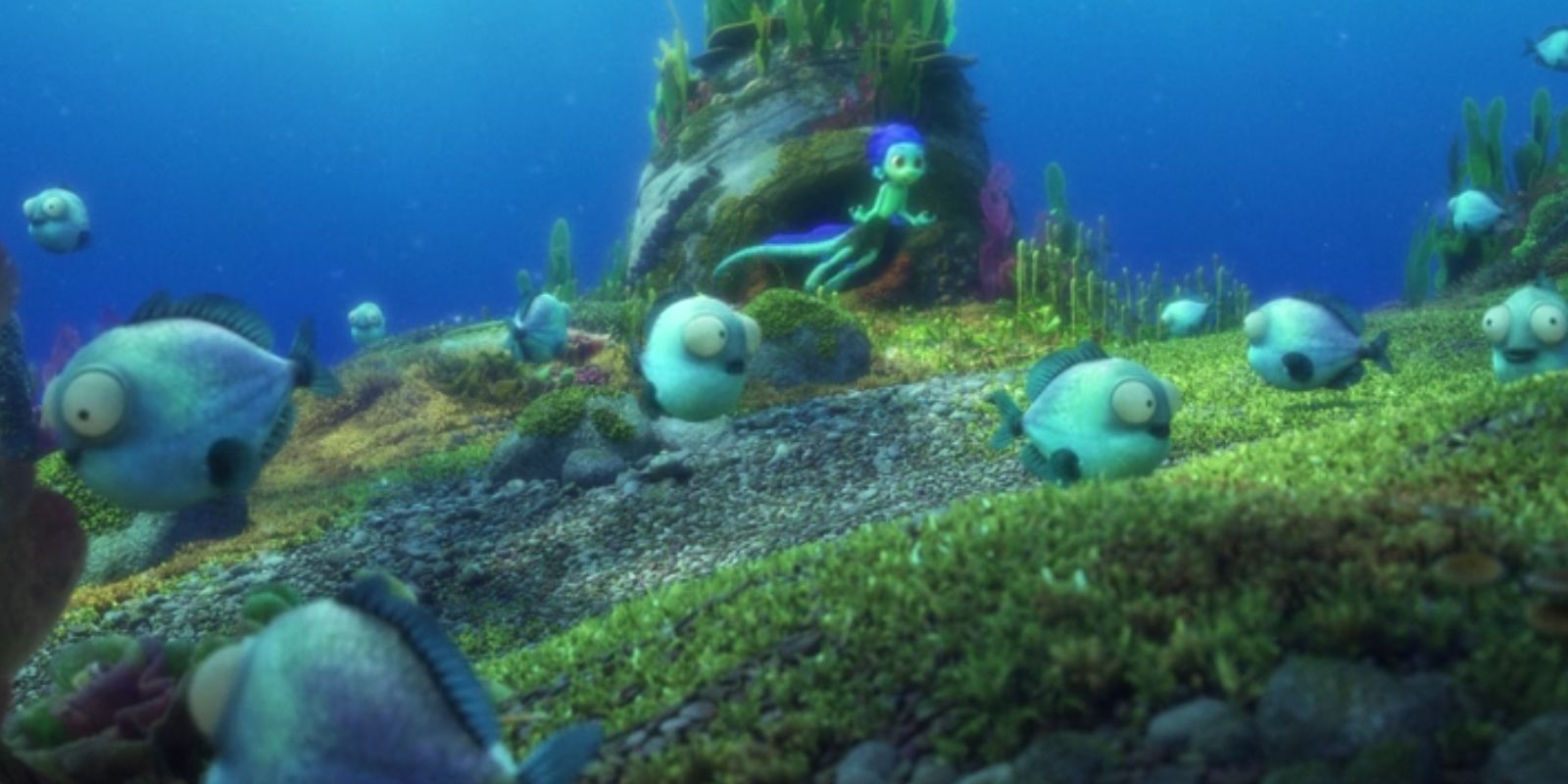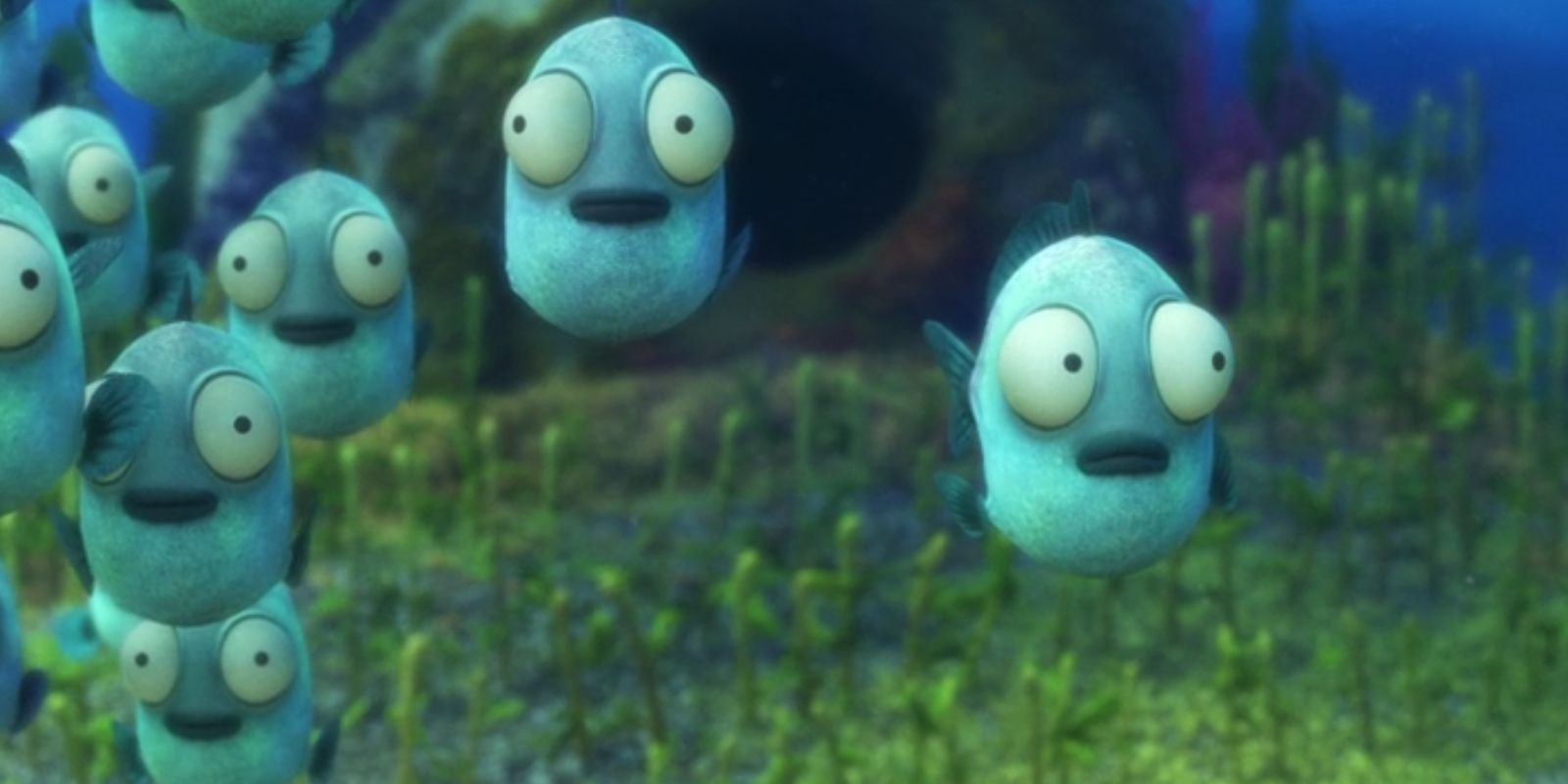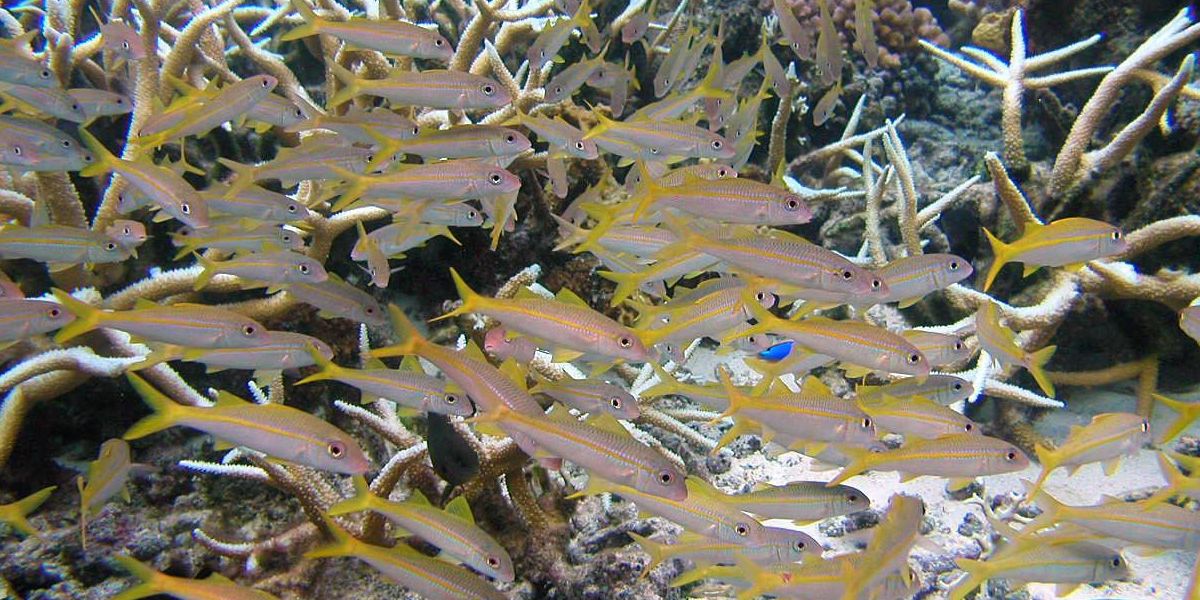Warning: This article contains spoilers for Luca, currently airing on Disney+.
Disney has been known to change the appearance of animals in its animated features to make them more cute and marketable for their audiences. A prime example is Flounder from The Little Mermaid; in the film, his eyes are on opposite sides of his face like a human, but in the real world, flounders' eyes migrate to the same side of their face as they age. Although the creative license taken in Disney Pixar's Luca is not quite as extreme, the film does reimagine the appearance of the goatfish to be more whimsical than their real life counterparts. Despite these changes, the choice of goatfish for Luca's family farm resonates with the film's themes of struggling with being different and trying to blend in.
In the film, Luca is a sea monster who lives on a farm with his parents and helps them raise goatfish. The goatfish are adorable, with rounded bodies and large, bulbous eyes that gaze vacantly out at the world around them. They are also all light blue, with dark blue fins and mouths, and their pupils are round and tiny. These goatfish get into mischief and bleat, behaving similarly to goats on land. Luca's main responsibility seems to be shepherding the goatfish from their barn to fields to graze. While goatfish are shown to possibly be omnivores in Luca—the goatfish Mona Lisa smiles because she is trying to devour baby goatfish—they mainly graze upon the plant life under the sea.
One goatfish, Giuseppe, seems to be even more determined than the rest to wander off and explore the world. Luca scolds Giuseppe for this and reminds him of the fate of Enrico, a goatfish who disappeared, but the scolding mainly just reveals Luca's own desire to explore. While most of the goatfish are only seen at the beginning of the movie, Giuseppe reappears in the post-credits scene, seemingly having followed Luca's Uncle Ugo to the deeper waters. Despite Ugo's eagerness to share, Giuseppe looks like he is ready to run away at a moment's notice. Like Luca, Giuseppe still seeks freedom, but he has not made the right friends for that to become a reality.
In real life, goatfish are not nearly as cute, but they are an obvious choice for Luca's family to farm because they are plentiful in the seas surrounding Italy and around the world. Real goatfish have longer, thinner bodies and much smaller eyes than the Pixar version of the species. They also come in a variety of different colors and patterns, depending on their species. As explained by the Waikīkī Aquarium, "goatfishes are named for a pair of whisker-like sensor barbels on the lower jaw, which they use to probe for food hidden in reefs and crevices." Additionally, goatfish are predators, and as PBS' Nature documentary series shows, they often work with other species to capture their prey.
Despite these differences, a more prominent reason for including goatfish in Luca lies in their real world appearance. As the Waikīkī Aquarium further explains, some species of goatfish "are capable of rapid color changes, and a fish resting on the bottom of the ocean often exhibits a different color than when it is active." Thus, for their own protection, goatfish use mimicry to disguise themselves from predators and to help them capture their own prey.
Similarly, Luca, Alberto and the rest of the sea monsters can also change their appearance when they are dry to resemble humans. This conceit is the crux of the film, as Luca and Alberto struggle to hide their true nature from a town full of people who seemingly want to murder them for being sea monsters. Even though their abilities help Luca and Alberto blend in and provide them with some protection, throughout the course of the film, they learn that some people can be trusted with knowing what they are. With the help of friends, they gain acceptance, at least in Portorosso.
Therefore, while Luca's goatfish differ greatly from their real world counterparts, the species does hold symbolic meaning that connects with the themes of the film. Like Luca and the rest of the sea monsters, real world goatfish are able to mimic the world around them to protect themselves from threats. However, unlike the goatfish, Luca does not just continue to disguise himself. Instead, he learns that some people may reject him for who he is, but the right people will embrace his differences and support him as he explores the world.
Directed by Enrico Casarosa, Luca stars Jacob Tremblay, Jack Dylan Grazer, Emma Berman, Maya Rudolph, Marco Barricelli and Jim Gaffigan. The film is streaming on Disney+.



